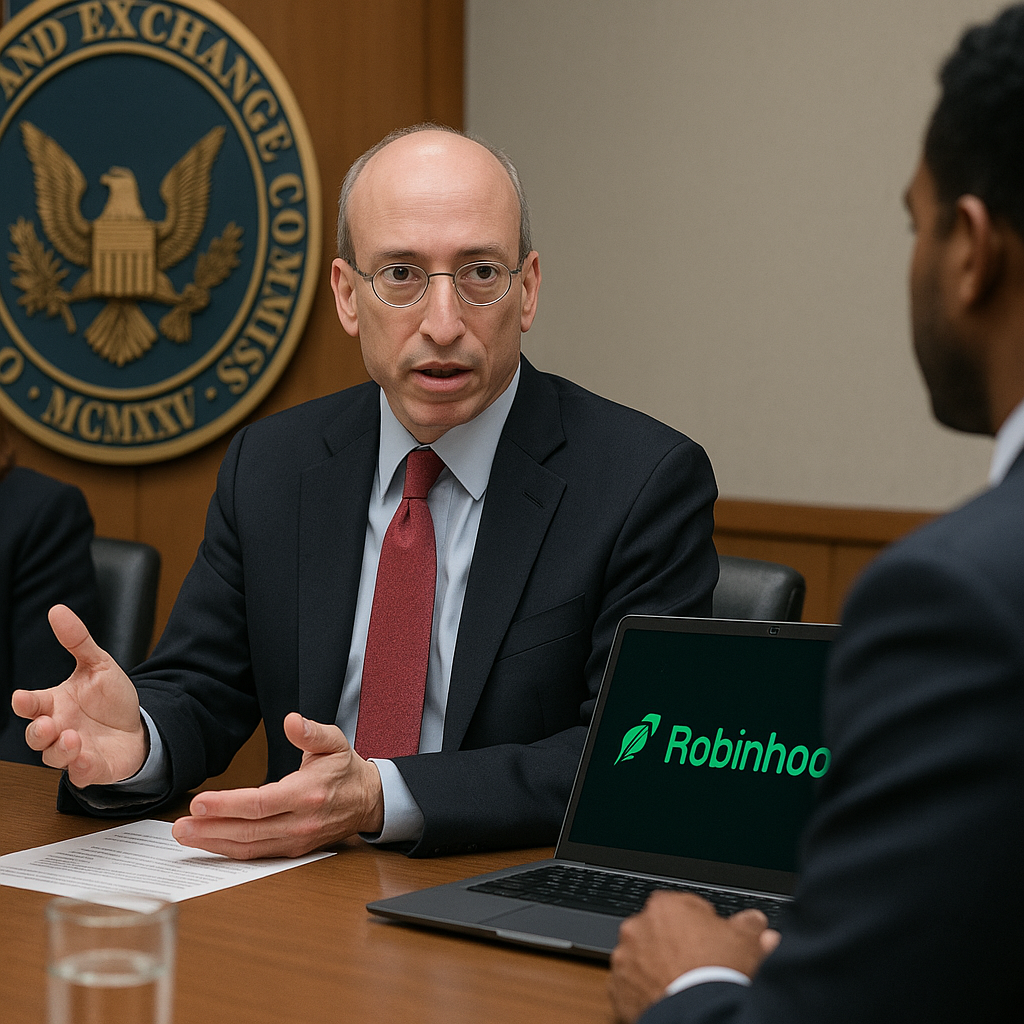The U.S. Securities and Exchange Commission’s (SEC) dedicated crypto task force held high-level discussions this week with trading platform Robinhood, marking another step in the regulator’s efforts to shape policy around digital assets and tokenized securities. The meeting reflects growing urgency from regulators and industry players to establish clearer guardrails for one of the fastest-evolving corners of financial markets.
Why this matters
Crypto regulation in the U.S. remains fragmented, with ongoing debates over whether certain digital assets should be classified as securities, commodities, or something else entirely. The SEC’s crypto task force has been meeting with leading firms to gather industry perspectives, assess compliance gaps, and explore frameworks for integrating tokenized financial instruments into the existing securities market structure.
Robinhood, with its large retail investor base and increasingly diverse crypto offerings, is a key stakeholder in this dialogue. The platform’s combination of traditional equities, options, and crypto positions it at the intersection of regulatory overlap, making its feedback vital in shaping realistic oversight rules.
Key discussion points
1. Tokenized securities oversight.
The task force and Robinhood reportedly focused on how tokenized versions of equities, bonds, and funds could fit within the existing regulatory perimeter. Questions remain over disclosure standards, investor protections, and settlement mechanisms when traditional securities are issued on blockchain rails.
2. Exchange registration & compliance.
Another point of discussion was whether crypto trading platforms should operate under the same framework as national securities exchanges or broker-dealers. Robinhood’s dual role as a broker in traditional markets and crypto service provider puts it under closer regulatory examination.
3. Stablecoins and payments.
With stablecoins increasingly viewed as potential payment rails, the SEC is evaluating whether their use in retail platforms like Robinhood introduces systemic risks or investor protection concerns. Robinhood is likely seeking clarity on how stablecoin offerings would be regulated under the securities laws.
4. Retail access to tokenized assets.
The meeting also examined how tokenized securities could be made available to retail traders without increasing risk exposure. For platforms like Robinhood, where user experience is built around accessibility and simplicity, regulatory complexity could clash with business models.
Market implications
The talks underline two major trends:
- Convergence of traditional and crypto finance. As more firms explore tokenization of securities and settlement on blockchain, platforms like Robinhood could become central to bridging the gap between Wall Street and Web3.
- Regulatory overhang for retail trading apps. The SEC’s engagement suggests stricter rules could soon apply to how Robinhood and peers handle crypto trading, custodianship, and tokenized instruments. This may raise compliance costs but also create long-term legitimacy for the sector.

What’s next?
- Follow-up consultations. The SEC is expected to continue bilateral discussions with other exchanges, custodians, and issuers to build a multi-stakeholder regulatory blueprint.
- Draft guidance on tokenization. A proposal could be issued in coming months clarifying how tokenized securities fall under the Securities Act.
- Industry lobbying. Platforms like Robinhood are likely to intensify engagement with regulators and lawmakers to push for rules that balance innovation with investor protection.
- Impact on ETFs & funds. Clarity on tokenized assets could accelerate the approval of more blockchain-based ETFs and open-ended funds, broadening institutional participation.
Bottom line
The SEC’s meeting with Robinhood highlights the regulator’s determination to address the fast-emerging world of tokenized securities while also tightening oversight of retail-facing crypto platforms. While the outcome could impose stricter compliance standards, it also signals a potential path toward regulatory clarity — a long-awaited development that may help legitimize tokenized finance and unlock wider adoption.











